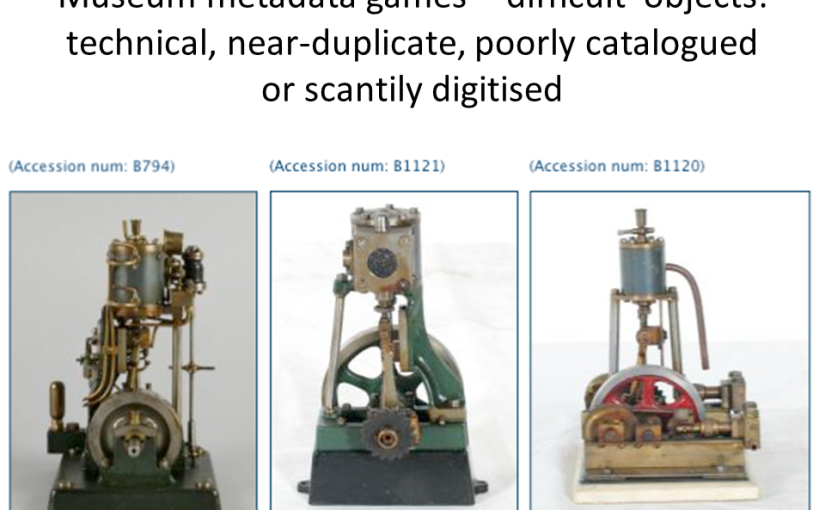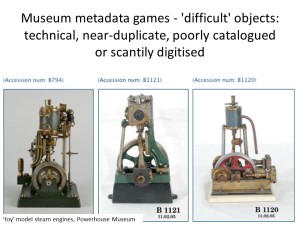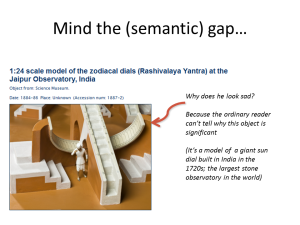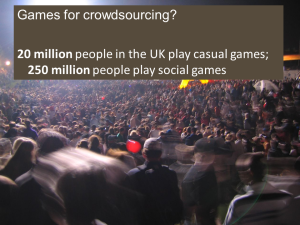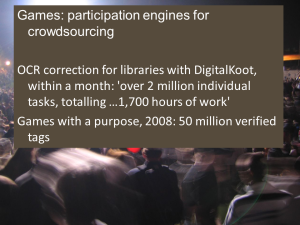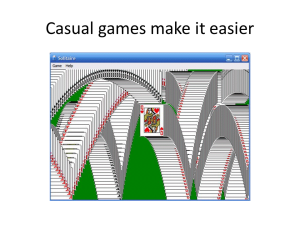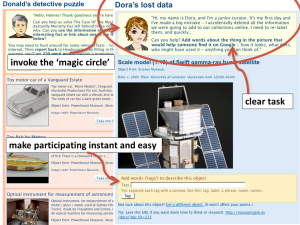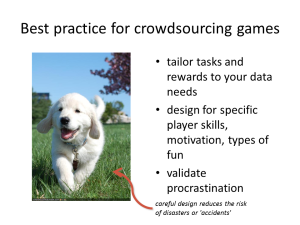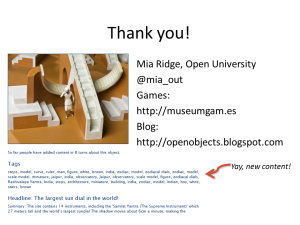My really quite rough-and-ready notes from Museums and Galleries Scotland's 'Collaborate to Compete' conference. I've already posted my introductory notes for the session on 'Entrepreneurship and Social Media', so these notes are about the keynotes and the other sessions I attended.
The first speaker was Jeremy Johnson from Australia's Sovereign Hill, on 'Engaging with China: the new horizon for cultural and heritage tourism'. He talked about their research-led marketing program aimed at getting Chinese visitors to Sovereign Hill, which included marketing work in China, hiring Chinese-speaking staff, and developing tailored tours and experiences. They've also hosted Chinese student[?] teachers in their education department and organised touring exhibitions. They also had to deal with talking about racism in the past treatment of Chinese Australians in Sovereign Hill – their technique is apparently to 'tell it how it was', but because Chinese Australians were 'extraordinary contributors to society' it was easy to focus on the many success stories. In general, they've developed some experiences to meet the expectations of Chinese visitors, but still, 'the museum product has to be respected'.
Top quotes included:
- 'you must be able to answer the question "what would make someone visit your museum?"' – there must be a compelling reason to visit
- China is like 56 countries wrapped up into one. 'Saying you're going to China is like saying you're going to Europe'
- 'Develop a market strategy to deliver visitor experiences at the right price'. The best marketing strategy can be undone if visitor experience does not meet the promise. Cultural awareness training essential for all staff and volunteers.
'Bear in mind China isn't a democracy, not everyone gets access to Google'.
I then went to the first 'New Partnerships' seminar, where I heard lessons from the 'Curious' project at Glasgow Museums, including the possibility that 'sustainability can be about working with different people at different stages rather than the one group of people working with the museum during the whole process', and that 'people put together objects in ways that curators never would' (e.g. a ceramist put together objects from different parts of the world based on the presence of finger marks in the clay); partnership successes: mutual benefits, increased understanding, new opportunities, positive feedback; partnership challenges: managing expectations (also finding the right people to talk to), organisational structures, a draw on resources, tracking increases in visits.
In the same session, people from the 'Smart Collaborations' project talked about conceptual frameworks for collaboration, with a focus on attracting and retaining visitors within an area – it was hard to see the slides, but it seemed to be about designing experiences for tourists. The top tip was: don't be afraid to use offers, vouchers, or other deals to attract customers; and capture data when getting people in.
The plenary talk before lunch was Stuart Dempster (JISC's Strategic Content Alliance) on 'Sustaining Digital Resources' [earlier report at Business modelling and sustainability, new one will go live there next month ?]. If the digital age is a game-changer for institutions, how can bricks-and-mortar organisations not only be on the web, but of the web. What skills, licensing need to be in place? They've been looking at business models, including the effects of economic downturn and government cuts. Funded projects must deliver value to users, not just driven by curatorial concerns; a key concern is how to generate new forms of income with integrity.
Tips for communicating value to adminstrators: have a seat at the table whenever decisions are made about digital resources; engage administrators early to develop shared sense of responsibility for the project; have an advocacy campaign with users outside the institution so you've got voices of support when needed; identify different types of stakeholders and work appropriately with each – identify champions if you can. Sustainable projects: empower leadership to define the mission and take action; create a strong value proposition; creatively manage costs; cultivate diverse sources of revenue; have a system of accountability. Collaborations need consensus, communication, capacity, trust, metrics…
After lunch, Alphonse Umulisa, Director General of The Institute of National Museums of Rwanda spoke on 'Repositioning Cultural Tourism'. Previously at the Museum of London, his job is to raise awareness about Rwanda's history and heritage sites – difficult when Rwanda's history is so painful. They're trying to look forward to the future, and forget the past, but even knowing where to start was hard. He said you can't learn history in schools in Rwanda – it's not taught – but you can learn Rwandan history in museums. The museums had to change from research institutions to learn how to attract tourists, and they had to get Rwandans visiting museums again. His talk was both utterly humbling – the Rwandan government's vision for 2020 is for every family to have a cow – and inspiring – his motto is: 'discover your museums, cherish your heritage'.
Tony Butler has posted his own notes from his inspiring talk on how the Museum of East Anglian Life transformed itself from a failing organisation to a thriving enterprise, and about his aim to make it a participative institution, a space for co-creation or to help people look at the world differently and to place the museum in the rhythm of daily life.
After my session on 'Entrepreneurship and Social Media', I went to a workshop on 'Smarter Museums' with Anne Murch (who prefers the concepts of resilience or entrepreneurship to 'sustainability'). The workshop covered the principles of a 'thinking environment': appreciation, attention, equality, incisive questions. We did a really interesting (and at first, challenging) exercise in pairs, where you had to either just listen, or just talk, for three minutes, before swapping with your partner. It's hard – if you're meant to be listening, you want to encourage the person talking, or if you're talking, you want to stop and let the other person have a go. We did it again later, and it was much easier. We were also asked to consider "if we knew that together we can have a thriving museum that provides the very best experience for our visitors, what would the org look and feel like? What is the shift we need to make to deliver this?", and the importance of diversity as both the identity of the people that are shaping the future plans and the ideas that are generated. A team that takes a 'diagonal slice' across and down through the museum can be effective – the people with least power are often most creative and least encumbered. Another suggestion for better meetings was to frame each agenda item as a question.
The event closed with the launch of the National Strategy Consultation by Fiona Hyslop, Scottish Cabinet Secretary for Cultural & External Affairs National Strategy Consultation, with a speech that was a lovely celebration of the contribution of museums and cultural heritage to Scottish life. The document itself outlines the context, guiding principles, vision, themes and objectives of the proposed sector consultation process, which will lead to the national strategy for Scotland’s Museums and Galleries. (Interestingly, Australia is also running a 'Digital Culture Public Sphere' consultation for input into National Cultural Policy.)
